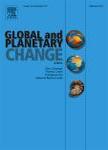版权所有:内蒙古大学图书馆 技术提供:维普资讯• 智图
内蒙古自治区呼和浩特市赛罕区大学西街235号 邮编: 010021

作者机构:Univ Palermo Dipartimento Sci Terra & Mare Via Archirafi 22 I-90134 Palermo Italy Univ Vigo Ctr Invest Marina Palaeoclimatol Lab GEOMA Vigo 36310 Spain Australian Natl Univ Res Sch Earth Sci Canberra ACT 2601 Australia Univ Auto noma Barcelona UAB Inst Environm Sci & Technol ICTA Edifici ZCarrer ColumnesCampus UAB Barcelona 08193 Cerdanyola Del Spain CNR Ist Sci Patrimonio Culturale Via Cardinale Guglielmo Sanfelice 8 I-80134 Naples Italy Univ Southampton Ocean & Earth Sci Southampton SO14 3ZH England
出 版 物:《GLOBAL AND PLANETARY CHANGE》 (地球和行星的变化)
年 卷 期:2022年第217卷第0期
核心收录:
学科分类:07[理学] 0708[理学-地球物理学] 0705[理学-地理学] 0704[理学-天文学]
基 金:Universidade de Vigo [CTM2016-79547- R] CALMED project [2014 SGR - 1356] Generalitat de Catalunya (MERS) FFR2021 grant Beatriz Galindo Fellowship (2020) RR04092017
主 题:Coccolith F profunda Holococcolith Eastern Mediterranean Middle Pleistocene Monsoon
摘 要:The eastern Mediterranean Sea lies under the influence of high-and low-latitude climatic systems. The northern part of the basin is affected by Atlantic depressions and continental and polar air masses that promote inter-mediate and deep-water formation. The southern part is influenced by subtropical conditions and monsoon activity. Monsoon intensification results in enhanced freshwater discharge from the Nile River and other (now dry) systems along the North African margin. This freshwater influx into the Mediterranean Sea reduces surface water buoyancy loss. Disentangling the influences of these diverse climatic forcings is hindered by inherent proxy data limitations and by interactions between the climatic forcings. Here we use a wealth of published and new paleoclimate records across Termination II to understand the impacts of the higher latitude and subtropical/ monsoon climate influences on coccolithophore ecology and holococcolith preservation in Aegean Sea sediment core LC21. We then use these findings to interpret coccolith assemblage variations at Ocean Drilling Program Site 967 (located nearby LC21, at the Eratosthenes Seamount) during multiple glacial-interglacial cycles across the Middle Pleistocene (marine isotopic stages 14-9). The LC21 analysis suggests that holococcolith preservation was enhanced during Heinrich Stadial 11 (-133 ka) and cold spell C26 (-119 ka). These two events have been previously linked to cold conditions in the North Atlantic and Atlantic Meridional Overturning Circulation weakening. We propose that associated atmospheric perturbations over the Mediterranean Sea promoted deep -water formation, and thus holococcolith preservation. Similarly, in the Middle Pleistocene (MIS 14-9) of Site 967, we observe temporal coincidence between ten episodes of enhanced holococcolith preservation and episodes of Atlantic Meridional Overturning Circulation slowdown. In Site 967, we also identified repeated fluctuations in placoliths and in Floris